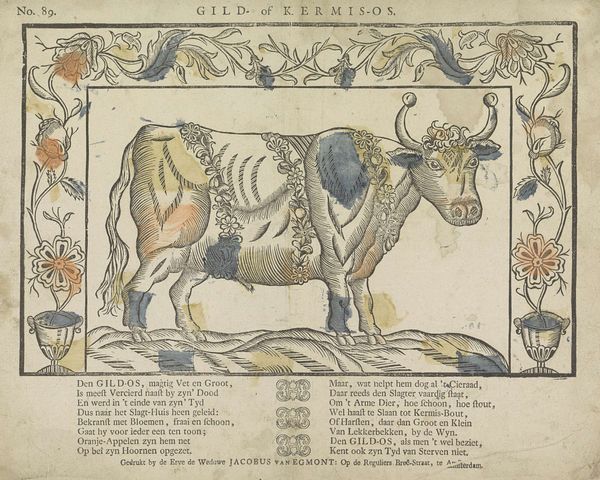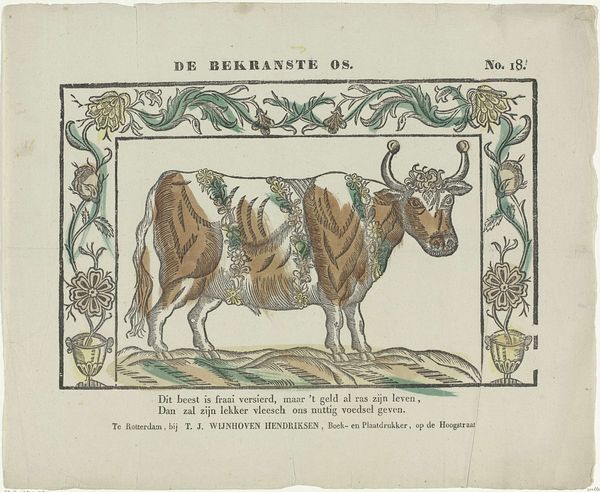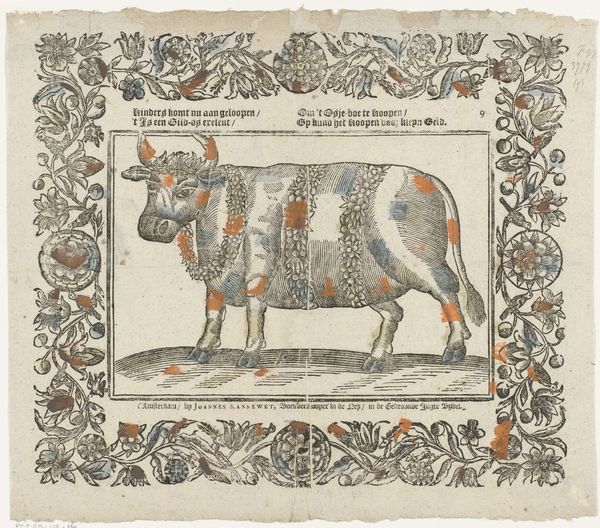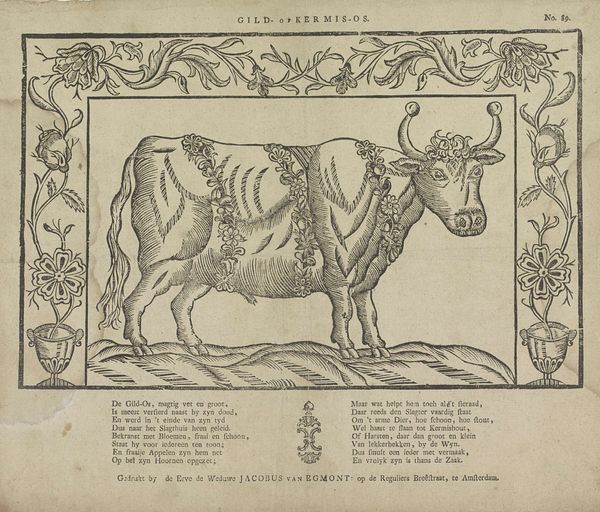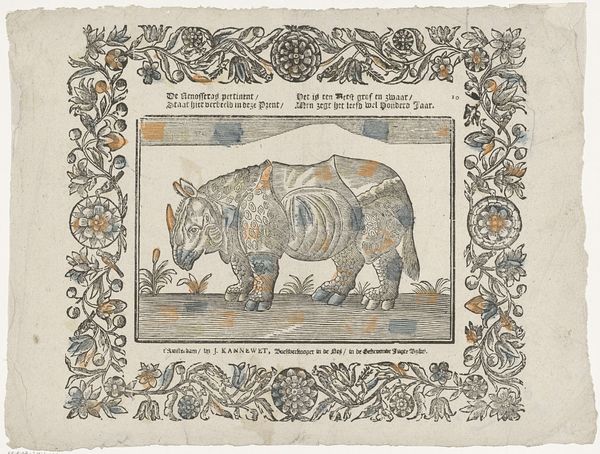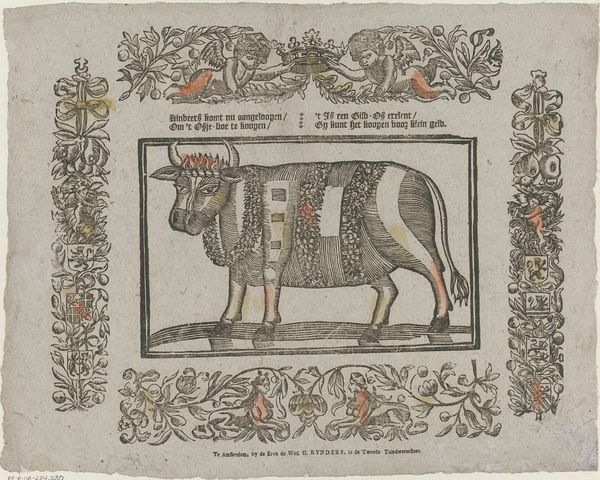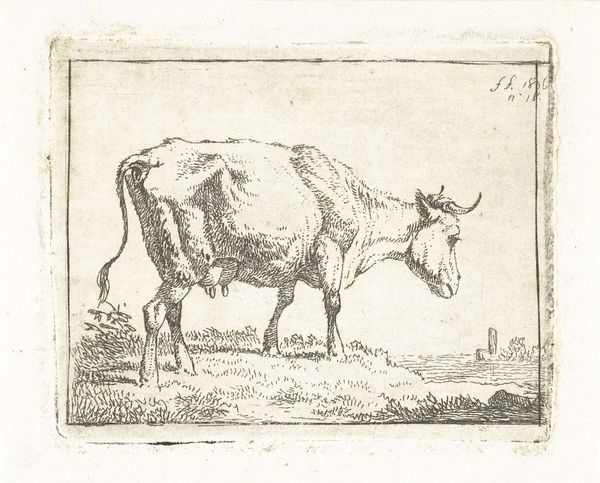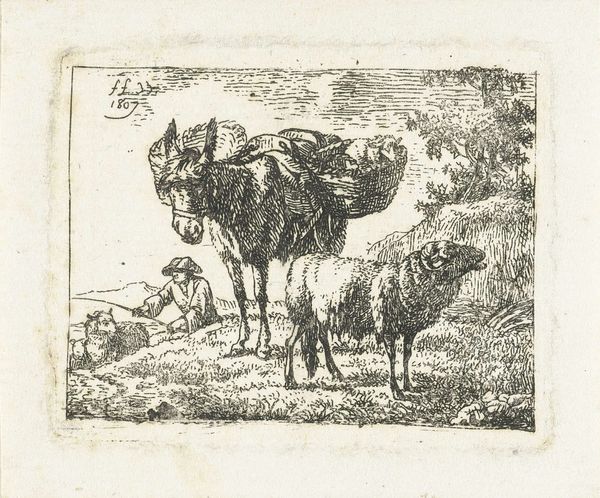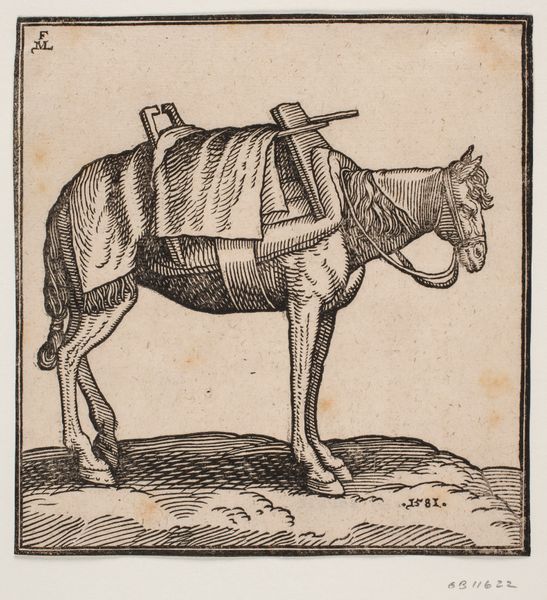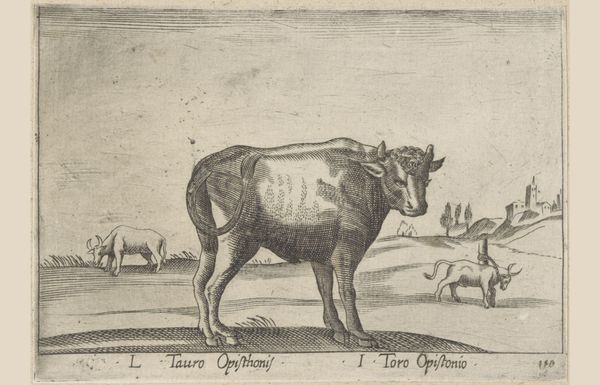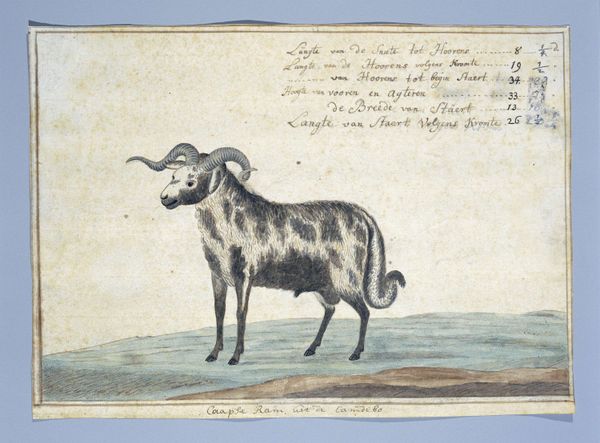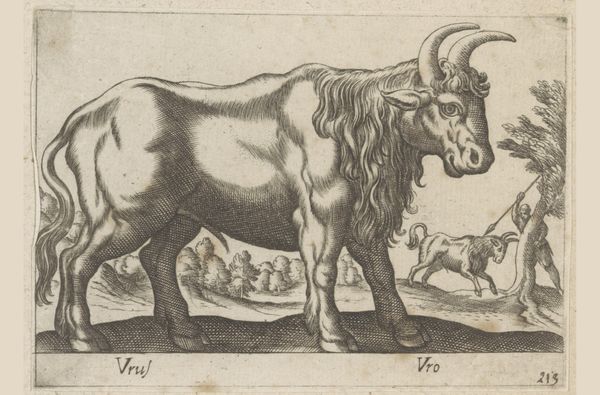
drawing, print, engraving
#
portrait
#
drawing
# print
#
figuration
#
engraving
Dimensions: height 305 mm, width 410 mm
Copyright: Rijks Museum: Open Domain
Editor: This print, titled "De bekranste os," or "The Garlanded Ox," created sometime between 1832 and 1850, uses engraving. It looks like the ox is decorated for… something? What do you see in this piece? Curator: Well, what I see is a pointed commentary on the objectification of animals for consumption, typical for prints of that era. Editor: Objectification? It just looks like…decoration. Curator: It's more insidious. Think about the floral garlands. On the one hand, there's beauty. But aren’t these garlands ultimately masking the grim reality of the animal's fate, softening the reality that the poem references as a source of human nourishment? This reminds me of current debates around how food industries use visual imagery. The text also gives important context about the role that this animal had within the local economy. This print isn't simply decorative, it's socially and politically charged. Editor: I didn’t think about the link to the current meat industry! Curator: It's about connecting those historical threads to current realities. Looking at these materials – drawing and engraving – forces us to confront ethical considerations within visual representation and material consumption then, as it is now. This era laid some groundwork for us, in some way! Editor: I guess I see the print with fresh eyes now. Curator: Exactly. The piece challenges our own participation in those systems. Now, let’s talk about Erve Wijsmuller and his shop in Amsterdam. He produced and sold numerous satirical and politically-motivated prints just like this.
Comments
No comments
Be the first to comment and join the conversation on the ultimate creative platform.
